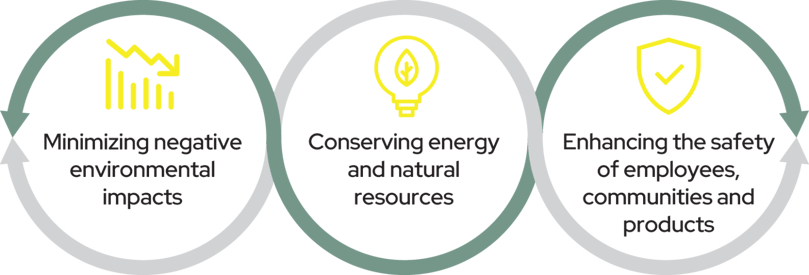It was not that long ago that people who cared about the environment were a niche market. ‘Green’ companies catered to this market while all others, including nearly all the largest manufacturers, focused on mainstream buyers to maintain their advantages in an economy of scale.
Then, slowly, the needle began to move, and an ever-larger percentage of the world’s consumers became aware and invested in protecting the planet.
This shift has not gone unnoticed by manufacturers.
The end of the line
Light, cheap, flexible and easy-to-clean, plastics gained traction in the 1960s, starting and feeding a trend for manufacturing short-life and single-use products.
As we now know, decades of the “take-make-dispose” method of producing and consuming goods is a big part of why the planet is in trouble. True, it took some segments longer than others to admit to the inherent problems of “dispose” as an inevitable end point. However, overflowing landfills and cluttered oceans proved that this linear approach is not sustainable.
The end of end-of-life
In a circular economy, there is no end of life, only end of first life. Simply put, when a product can no longer be used there are numerous other choices ahead of simply throwing it away. The product and or its components are repaired, reused, recycled, remanufactured or repurposed. Products are also built to last longer, delaying the need to expend energy on giving them their next life.
That’s not all, of course. The circular economy encourages smarter practices at every stage of the value chain, including sourcing, manufacturing, and distribution. It relies heavily on sustainable manufacturing.
The advantage to thinking in circles
The United States Environmental Protection Agency (EPA) defines sustainable manufacturing as “creating manufactured products through economically-sound processes” while:

That sounds great. It also sounds like a lot of work, not to mention expensive. It’s no wonder a majority of companies are still dragging their feet. As of mid-2021, only 8.6 percent of the global economy was circular.
However, companies that hold onto this belief are losing out. The global market for low-carbon products shot past the $5 trillion mark over a decade ago. Adding to your profits, reputation and key relationships, value of entering a circular economy far outweighs its costs.
Good for profits
Crunch the numbers and you will find loads of opportunities to:
Increase sales
When you anticipate and meet consumer expectations for more environmentally responsible practices and products.
Enter new markets
Consumers under the age of 40, in particular, prefer to buy and use environmentally friendly products.
Improve efficiency and productivity
With the goal of producing more by using less, sustainable manufacturing goes hand-in-hand with lean practices.
Get a head start
By familiarizing yourself with sustainable alternatives to hazardous and eco-unfriendly materials.
Close the loop
By taking ownership of their products during the full (circular) lifecycle, including ways to bring parts or products back at the end of their first life for remanufacturing.
Good for your brand
How would you like to be known as a manufacturer who:
Leads in sustainable manufacturing
By being proactive rather than reactive in implementing environmentally responsible practices
Stands by their word
When you demonstrate that your supply chain partners have certifications, acknowledgments, and additional recognition that your practices and products meet the highest international standards.
Is innovative
When you take the challenges of a circular economy as opportunities to shape the future.
Is here to stay
By showing that you can and will adapt to today’s and tomorrow’s rapidly changing requirements.
Good for your relationships
Manufacturers have always had to adapt to changing demands from multiple stakeholders. Wow the today’s stakeholders by:
Impressing shareholders and investors
In part because of the financial and reputational benefits, over one quarter of the world’s largest companies admit that pressure from this group compels them to adopt circular models.
Avoiding negative publicity
Polluters and other environmentally irresponsible companies attract unwanted attention from watchdog activists, news outlets and, of course, consumers on social media.
Gaining community favor
By showing that you protect and even enhance the areas in which you operate.
Attracting young talent
As a generation, Millennials and Gen X-ers seek purpose in their jobs and are very concerned about the climate crisis; so much so that they would accept a lower salary if it meant working for a company that shared their values.All these benefits are just the icing on top of a planet-saving cake. Our next blog outlines what key changes to manufacturing are necessary to ease into the circular economy – and an unexpected shortcut. Click here to read on or contact us directly to find out more.
Would you like a copy of this post to share?